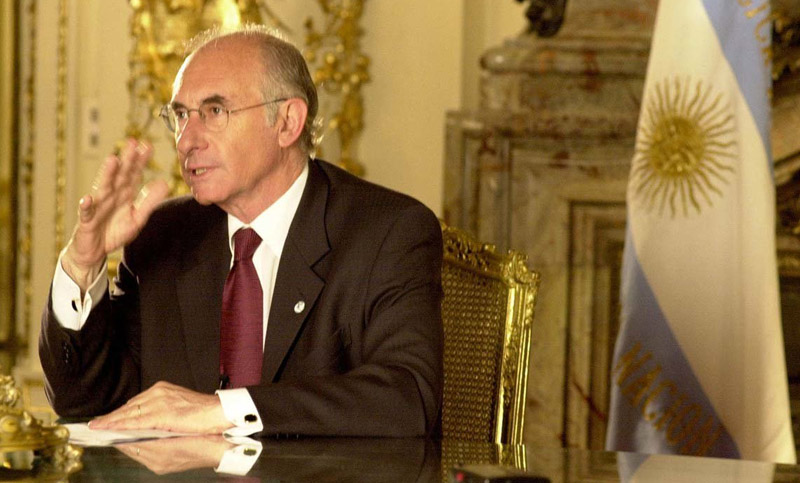 BUENOS AIRES, Argentina — Former Argentine President Fernando De la Rúa, who attracted voters with his image as an honest statesman and later left the country plunged into its worst economic crisis, died Tuesday at age 81.
BUENOS AIRES, Argentina — Former Argentine President Fernando De la Rúa, who attracted voters with his image as an honest statesman and later left the country plunged into its worst economic crisis, died Tuesday at age 81.
President Mauricio Macri sent a tweet expressing regrets at the death of de la Rúa and saying, "His democratic trajectory deserves the recognition of all Argentines." The Telam state news agency said he died of cardiac complications.
De la Rúa served from 1999 to December 2001, when he infamously escaped by helicopter from the rooftop of the pink presidential palace. It came after days of violent protests against his handling of the crisis amid rioting that caused dozens of deaths across Argentina.
De la Rúa graduated with a law degree and was politically active from his youth in his native province of Cordoba. At the age of 36, he ran as vice president on the ticket with Ricardo Balbín in a 1973 presidential election that was won by the leader and founder of Peronism, Juan Domingo Perón.
De la Rúa then lost against Raúl Alfonsín in the first presidential election held after Argentina returned to democracy following the 1976-1983 military dictatorship.
After serving in both houses of Congress, he was elected as the first mayor of Buenos Aires in 1996. The Argentine capital had achieved its autonomy from federal control two years earlier following a constitutional reform.
De la Rúa launched his successful presidential candidacy amid economic turmoil that began under President Carlos Menem and frustration by Argentines over what they believed was Menem's tolerance of corruption.
He took office in December 1999 with a popularity rating above 70 percent and a pledge to improve the economy. But he was forced to order tax hikes, salary cuts for public workers and other unpopular measures and he left office with ratings in the single digits.
His image for transparency was tarred in 2000 when a journalistic investigation revealed allegations of bribes to opposition senators to pass a law weakening worker protections. The scandal caused the resignation of Vice President Carlos Álvarez and weakened the governing coalition.
In an effort to curb the economic and governance crisis, De la Rúa appointed Domingo Cavallo as economy minister. The Harvard University-trained economist was widely credited with turning around Argentina economy during his first stint in 1991-1996 by pegging the Argentine peso one-to-one with the U.S. dollar. But in 2001, his belt-tightening policies, along with his decision to partially freeze bank accounts, proved highly unpopular, and he was also forced to step down in December 2001.
The crisis in 2001-2002 was devastating. One of every five Argentines was jobless and some reported going hungry. The peso, de-linked from the dollar, lost nearly 70 percent of its value. Banks were barricaded behind sheet metal as thousands of protesters unsuccessfully tried to withdraw their savings.
At least 27 people died in protests and looting that swept Argentina in December 2001 and the country eventually defaulted on a record debt of more than $100 billion. After De la Rúa left, Argentina saw a revolving door of five presidents over two weeks.
The final image of de la Rúa's as president was his helicopter lifting off from the presidential palace rooftop as the sun set behind a haze of tear gas and a raging crowd hurled insults from the capital's historic Plaza de Mayo.
From The New York Times (edited)